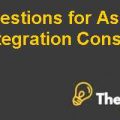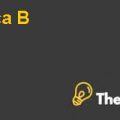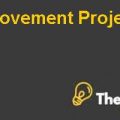Question 1
What is the mission of the IRS?
“The mission of IRS is to provide the taxpayers of America with the top quality service for helping them to meet their tax liabilities and understand their tax responsibilities. Moreover, the organization’s mission includes the application of the tax law to everyone with fairness and complete integrity.”
Question 2
Who are the IRS's customers and what services does the IRS provide?
In simple terms, the taxpayers are the customers of IRS. However, these taxpayers include a diverse array of individual households, self-employed workers, small businesses, large businesses, and tax-exempt organizations such as schools and nonprofits. The profiles of these customer segments can be seen in exhibit 2. Moreover, information of customer segmentation is shown in exhibit, 1 in appendix. There are a number of services provided by IRS such as basic taw law assistance, multilingual assistance, payment arrangements, procedural enquiries, solutions to the tax issues, alien clearances, adjustments and account inquiries (IRS, 2017).
Question 3
How does the IRS influence the behaviour of its customers?
The IRS influences the behaviour of its customers by creating a streak of confidence within the customers and the employees by conveying competency to the agency’s customers. The customers were primarily influenced because the employees of the company were comfortable with the criticism from the taxpayers rather than the management. Secondly, IRS had been providing standard, specialized and a consistent service to resolve the problems of their customers, which influenced their behaviour greatly.
Transformation At The Irs Harvard Case Solution & Analysis
Question 4
What instigated the change effort at the IRS and what, specifically, was targeted for change?
The efforts for change had been instigated at IRS because of the performance of the organization, which has reached critical levels. There were issues in each area of the organization. First, there was little accountability for the resources spent and the results were never measured in terms of the effective use of the funds. The hours of operation varied from location to location because of decentralized network. The passing of RRA98 challenges the service quality and demanded change. Moreover, the sheer volume of calls challenged the call centers and only one director was responsible for managing the service. There was no procedural authority and centralized policy. Lastly, the company relied on IT for storing the taxpayer data but confusion and complications had accompanies modernization and made the process difficult. All these factors instigated change at IRS.
Question 5
How does the "new" IRS differ from the "old" IRS?
The new IRS introduced a number of changes as compared to the old IRS such as a steering committee of managers was created along with union representatives to oversee the decision-making and the change process. New human resource practices had been developed for supporting the organizational structure. In old IRS, compensation was linked only to seniority but in new IRS, compensation was now linked to performance. The performance evaluations and expectations were improved in new IRS for all the employees....................
This is just a sample partical work. Please place the order on the website to get your own originally done case solution.













